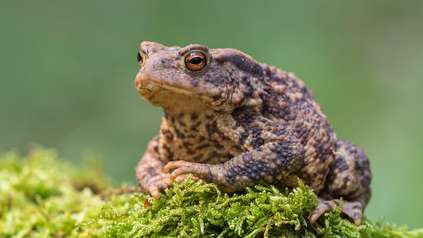Pan-European project generates genomes showcasing continent's rich biodiversity
The European Reference Genome Atlas (ERGA) Pilot Project has brought together collaborators from 33 different European countries to produce high-quality reference genomes for 98 European species.
Announcing the success of its pilot project in npj Biodiversity, this continental effort sets the stage for a new inclusive and equitable model for biodiversity genomics.
Of the 98 reference genomes, the Wellcome Sanger Institute was involved in producing 38 pilot study genomes, assembled 14 of these genomes and curated 27.
“The ERGA Pilot project is a radical step forward for the continent as it links researchers who need genomes sequenced with sequencing hubs ready to do just that. This exchange promotes sharing of tools, approaches, and understanding and has led to the successful bid for Europe-wide Horizon 2020 Biodiversity Genomics Europe funding. The pilot teams’ enthusiasm has carried through to the wider project, and I am excited to see what they will accomplish in the future.”
Professor Mark Blaxter, Head of the Tree of Life programme at the Wellcome Sanger Institute
A particularly iconic species that the Sanger Institute team created a reference genome for was the White-Tailed Sea Eagle, Haliaeetus albicilla, the U.K.’s largest bird of prey. Using the reference genome sequence, scientists are monitoring reintroductions of this species in Britain and Ireland. They are also tracking genes during the migration of the birds’ across its range, which encompasses all of the northern Palaearctic, spanning Eurasia north of the foothills of the Himalayas, and North Africa.
As part of the Pilot Project, the Sanger Institute team sequenced species from the Faroe Islands, which are located half-way between Scotland and Iceland, in the Northeast Atlantic. A collaboration with Faroese partners included Sunnvør Kongsstovu paying a visit to the Sanger Institute to see how the Tree of Life programme sequencing pipeline works. While visiting, Sunnvør carried out analyses on two fish species – the greater Argentine and lesser Sand Eel, both commercially important fish species from the northern Atlantic. The new reference genome will enable scientists to make more accurate assessments of the genetic status of species populations, ultimately guiding management decisions to ensure that fishing practices are sustainable and responsible.
The Pilot Project provided valuable lessons and highlighted key challenges, positioning ERGA as a model for decentralised, inclusive, and equitable biodiversity genomics initiatives around the world.
As the global scientific community strives to unlock the full potential of genomic data, the establishment of a Europe-wide collaborative network under the ERGA umbrella accelerates scientific progress and facilitates its translation into tangible benefits for biodiversity and society. Additionally, the network helps researchers at all career stages to find and share opportunities for training, partnerships, and funding.
“ERGA was all a dream, until it wasn’t. Through this pilot project the prospect of uniting Europe under the flag of biodiversity genomics is now reality. We can be proud to have first established the process by which the genomes of many species will become available to the scientific community for conservation and beyond.”
Giulio Formenti, a member of the ERGA Pilot Committee and Research Assistant Professor at Rockefeller University in the USA
More information
Publication
Mc Cartney, A.M., Formenti, G., Mouton, A. et al. (2024) ‘The European Reference Genome Atlas: piloting a decentralised approach to equitable biodiversity genomics.’ npj biodiversity. DOI: 10.1038/s44185-024-00054-6.
The Pilot Project paper was published recently as part of an ERGA-related collection of research articles published in npj Biodiversity. This collection provides a broad overview of the Pilot Project, the sample collection and processing procedures and insights into the quest to create a high-quality reference genome database for all European animals, plants, and fungi.





